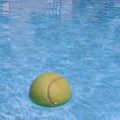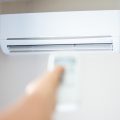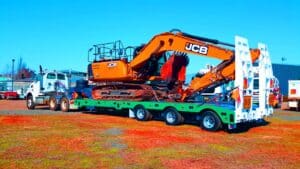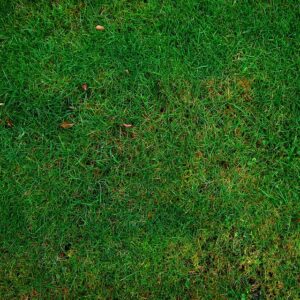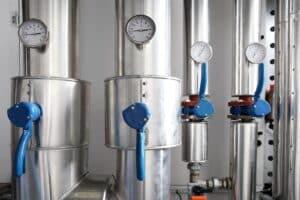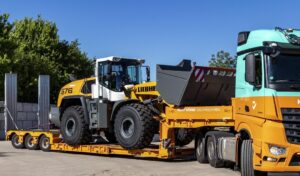I started using a tennis ball pressurizer about three years ago after doing the math on how much money I was throwing away. I play three times a week, and I was opening a fresh can every week and a half because the balls would go dead. That’s roughly $180 a year just disappearing into mushy, flat tennis balls.
A friend at the club mentioned he’d been using a pressurizer, so I figured I’d give it a shot.
A Realistic Look: What Pressurizers Can and Can’t Do
Here’s the thing I wish someone had told me upfront: some types work better than others. Some look great but wear out very quickly..
- The pressure inside the ball is only half the equation—the felt on the outside wears down too, and no amount of pressurization fixes that.
- If you’re an advanced player who’s picky about ball quality, you’ll still notice when the felt gets worn even if the bounce is decent.
That said, for recreational players like most of us, pressurizers can legitimately triple the lifespan of your balls. I now get 4-5 weeks out of a can instead of 10 days. The balls aren’t perfect at week four, but they’re totally usable for practice or casual matches.
Let me walk you through the different types and help you figure out which one actually makes sense for your situation.
The Three Main Types: What You’re Actually Choosing Between
There are basically three categories of tennis ball pressurizers, and they work in pretty different ways. Understanding the differences is key because what works for your buddy might be completely wrong for you.
1. Manual Pump Pressurizers: Control & Maintenance
Manual Pump Pressurizers come in two main designs, and the difference actually matters quite a bit.
Traditional Rigid Containers
- Design: A hard plastic or metal container (holds 3 to 15 balls). You screw the lid on tight and pump it up like a bike tire, usually to 14 PSI.
- How It Works: The external pressure is higher than the internal ball pressure, stopping the balls from leaking air through their rubber pores.
- The Downside: They rely on O-rings or rubber gaskets where the lid meets the container. These will leak over time. You’ll be checking pressure weekly and may need to replace the O-rings eventually.
- Cost: $30–$60 for decent ones.
Newer Tube-Style Tennis Ball Pressurizers
- Design: A flexible, heavy-duty tube made from multi-layer co-extruded plastic.
- The Advantage: Instead of a leaky threaded seal, the tube is clamped shut at both ends, creating a much more reliable, long-lasting seal. The flexible material distributes pressure evenly.
- Real-World Use: You can often go weeks or even months without needing to add air, making them much less maintenance-intensive than rigid containers.
- Capacity: Some, like Pressureball, can store and pressurize 8 tennis balls in one container.
- Note: Use the small pump they provide—large high-pressure bike pumps can be inaccurate at this PSI range and may damage the tube seams.
- Cost: $50–$70.
Best for: Budget-conscious players, people who don’t mind some maintenance, anyone who likes controlling pressure levels. Strongly recommend the tube-style.
2. Automatic or Battery-Powered Pressurizers: Set It and Forget It
These are the luxury option. They have a built-in electric pump that runs on batteries (usually D batteries or rechargeable packs).
- How It Works: You drop your balls in, close the lid, and flip a switch. The internal pump kicks on automatically whenever the pressure drops below the target level.
- The Upside: Convenience. The balls are always at the right pressure, and you never have to remember to pump it.
- The Downside: Price and longevity. This is a real investment, and eventually, the batteries will die faster or the pump mechanism will wear out. They are harder to repair than manual models.
- Cost: $80–$150.
Best for: Players who go through a lot of balls, coaches who need to maintain 20+ balls, and people who prioritize convenience over saving money.
3. Screw-Top Ball Savers: Preserving, Not Adding
These are basically airtight containers that seal tightly to preserve whatever pressure is already in the balls.
- Critical Fact: These preserve pressure, they don’t add it. If you put flat balls in, they stay flat. They only slow down the natural pressure loss.
- The Reality: Most basic screw-top models on the market can’t actually maintain a full 14 PSI seal for long. You might get an extra week or two of freshness, but not the dramatic lifespan extension of a true pressurizer.
- Advantages: Price and portability. They are super light and compact for travel.
- Cost: Basic models are $15–$40; better sealed ones are $50–$70.
Best for: Players who just want an extra week or two of freshness, frequent travelers, or anyone who wants to try the concept without a big investment. Manage your expectations.
What Actually Matters When You’re Buying
After years of experience, here are the factors that truly make a difference in real-world use:
- Capacity: How many balls do you need to store?
- Weekend Warrior (1-2x/week): 3-4 ball model is fine.
- Regular Player (3+x/week): Look at 8-12 ball capacity minimum.
- Coaches/Pros: Need larger automatic models (20+ balls).
- Seal Quality: This is THE critical factor for manual models.
- Look for models with thick rubber/silicone O-rings that are replaceable.
- Read reviews specifically for leaks and longevity.
- Build Quality: Avoid the absolute cheapest stuff.
- Look for thick plastic or metal construction, solid handles, and gauges that feel sturdy. A broken gauge renders the whole system useless.
- Ease of Use: If it’s a pain to open and close, you won’t use it.
- Simple screw-on lids or clamp systems work best.
- For automatics, check that the battery compartment is accessible.
- Pressure Gauge Accuracy: Varies wildly, but consistency is key. Even if it’s slightly off, as long as it’s consistent, you’ll learn what “good enough” looks like for your gauge.
Real Talk: Pressurizer Misconceptions
Let’s be clear about what these devices cannot do:
- They Will NOT Revive Dead Balls: High-pressure models can restore some bounce, but the felt is still worn. The ball might bounce, but the texture and feel will be off. For serious players, felt condition matters most.
- Proper Storage is Still Required: Don’t leave it in your hot car trunk all summer. Heat still degrades the rubber and felt.
- They May Not Be Worth It for Casual Players: If you only play once a month or less, the economics just don’t work. A can of balls will last you several sessions anyway. You’ll need years to recoup the cost.
- They Are Best for Practice, Not Tournaments: If you’re extremely picky about ball quality for a competitive match, you’ll likely still want to crack a fresh can.
How to Actually Decide: A Practical Framework
|
Your Scenario |
Recommended Solution |
Rationale |
|
Play 3+ times/week (High Usage) |
Manual Tube-Style or Automatic |
Fastest payback. Go manual if you’re budget-conscious; automatic if you value convenience. Look at 8+ ball capacity. |
|
Testing the Waters (Beginner) |
Basic Screw-Top or Cheapest Reputable Manual |
Low commitment. Use it for a few months to see if it fits your routine before investing in an upgrade. |
|
Coach/Teaching Pro (High Volume) |
Automatic, Large-Capacity Model |
Time savings alone justify the cost. Reliability is crucial when maintaining 50+ balls. |
|
Frequent Traveler (League Play) |
High-Quality Screw-Top Container |
Portability is key. Look for specialized seals that actually maintain 14 PSI, not just a basic airtight container. |
|
Casual Weekend Player (Low Usage) |
Honestly, you might not need one. |
Or, get the cheapest screw-top just to keep opened cans fresh between weekends. |
My Bottom Line After Three Years
After trying different types and watching what works for other players, here’s my final breakdown:
- Best Value: A decent Manual Pressurizer ($40–$50). Recoups the cost in a few months, and is simple to maintain/repair yourself.
- Best Convenience: Automatic Pressurizers. The “set and forget” factor is real, and consistency is what actually extends ball life.
- Best for Testing the Waters: A Quality Screw-Top Container with a proper 14 PSI sealing system. Affordable, portable, and gives you a realistic sense of long-term use.
I went from 26 cans of balls per year down to 9. That’s about $70 in savings after accounting for the pressurizer cost in the first year. Year two, it’s pure profit.
Just go into it with realistic expectations. You’re not going to get pro-level ball quality out of month-old balls, but you will get perfectly serviceable balls for practice and casual matches, and you’ll save money doing it. For most recreational players, that’s a pretty good deal.


